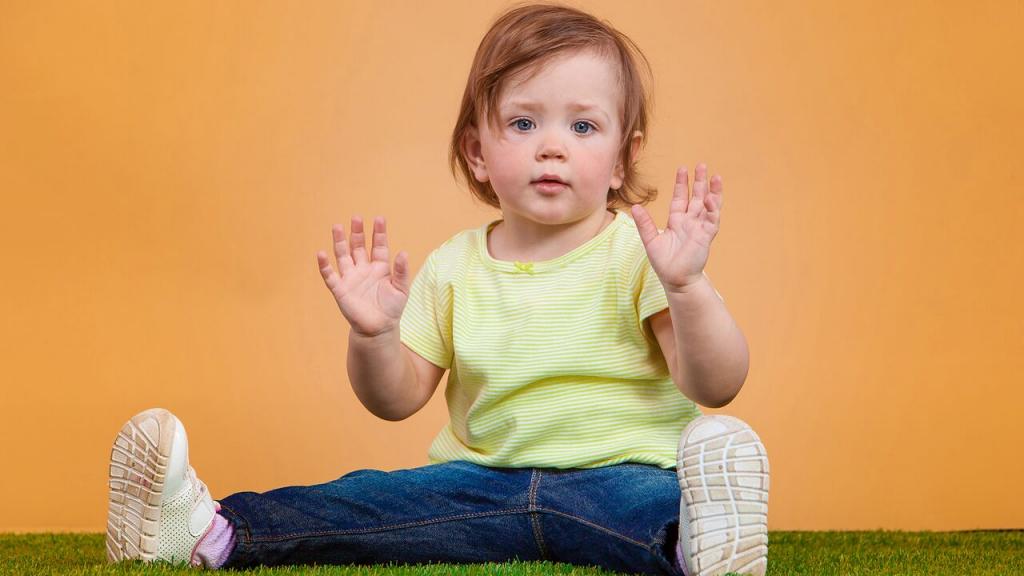
Baby Sign Language- 12 Signs to Try at Home
Imagine the absolute joy you would feel if you could talk to your baby.
Did you know that communicating with your baby, not talking but interacting, is completely possible? You can learn some basic baby sign language. Then with some simple hand gestures, you will be able to start to sign to your child. Babies are not ready for spoken language, but they are able to communicate through some basic signs. You may notice your baby starting to wave bye-bye or clap hands to show appreciation. These are common signs that children learn at a very young age.
Here are 12 basics for you to try.
- Mom
This simple hand sign is easy to learn. Use one hand, and spread the hand open. Hold your hand close to your face. Hold your pinkie finger out and tap your thumb to your chin.
- Dad
When you want to make a dad sign, you hold your hand up with your fingers spread apart. Hold your pinkie facing forward and put the top of your thumb on your forehead.
- Yes
Say yes by making a fist and then fold your wrist down and bob your fist up and down. This looks like a nodding head.
- No
You can always shake your head or wag your finger. However, there is a sign that means no. It takes three fingers. The thumb, index finger and middle finger. Quickly snap them together, that says ‘no!’
- Play
Everyone wants to play and so a sign for that is important. You make this sign by clenching your fists. Let your thumb and little finger stick out and wave your wrist by twisting it back and forwards.
- Sleep
After all that playtime, perhaps you need to sleep. Make the sleeping sign by holding one hand over your eye with the fingers spread out. Then glide your hand down the side of your face. Bring your fingers down slowly until your fingers and thumb touch your chin.
- Drink
Being able to ask for something to drink when you are thirsty is a good survival sign. The sign for drink copies the action of drinking from a cup. Curve your hand into a c shape and lift it to your lips. You could add some variety to your sign with some slurping noises or lips smacking in appreciation.
- Milk
Babies drink milk and the sign for this is holding up your hand and putting your fingers into a fist. Then keep the thumb and little finger down and raise the middle three fingers to sign for milk. The fingers look like the three strokes used to make the letter m.
- Food or wanting to eat
Flatten all your fingers onto your thumb and bring these fingertips up to your mouth. This sign could be added to with some yum yum sounds of enjoying food.
- If you are still hungry
Here is a way to ask for more with sign language. Put your thumbs and fingers together on each hand to make an o shape. Tap the two o’s together a few times to indicate you want more.
- Bath time
When it’s time for a bath and getting washed, then here is the way to sign. Make fists of both your hands and rub them on your chest like scrubbing your body in a bath.
- Help
Imagine if your baby could ask you for help instead of feeling frustrated and angry. The sign for help is a fist on the one hand with the thumb extended and a flat hand with the other hand. Move both hands up the body together to indicate help is needed.
Don’t worry about sign language leading to delays in speech. There is no indication of that happening. Learning sign language is just a tool that helps with communication and releases some of the frustration associated with the pre-language stage. Think of this like crawling and standing. They are pre-walking skills and help your baby to become mobile without taking away from learning how to walk. Learning sign does the same for communication and boosts your baby’s understanding of communication.
Babies show when they are becoming more sociable with their interaction via gurgling, babbling and making eye contact with you. When you see this behaviour, they may be ready for signing. Choose easy signs and try them often while saying the word and demonstrating the sign. Always use the same sign. When you see your baby use the sign, then offer lots of positive reinforcement. Clapping your hands together is a sign of appreciation. Well done!